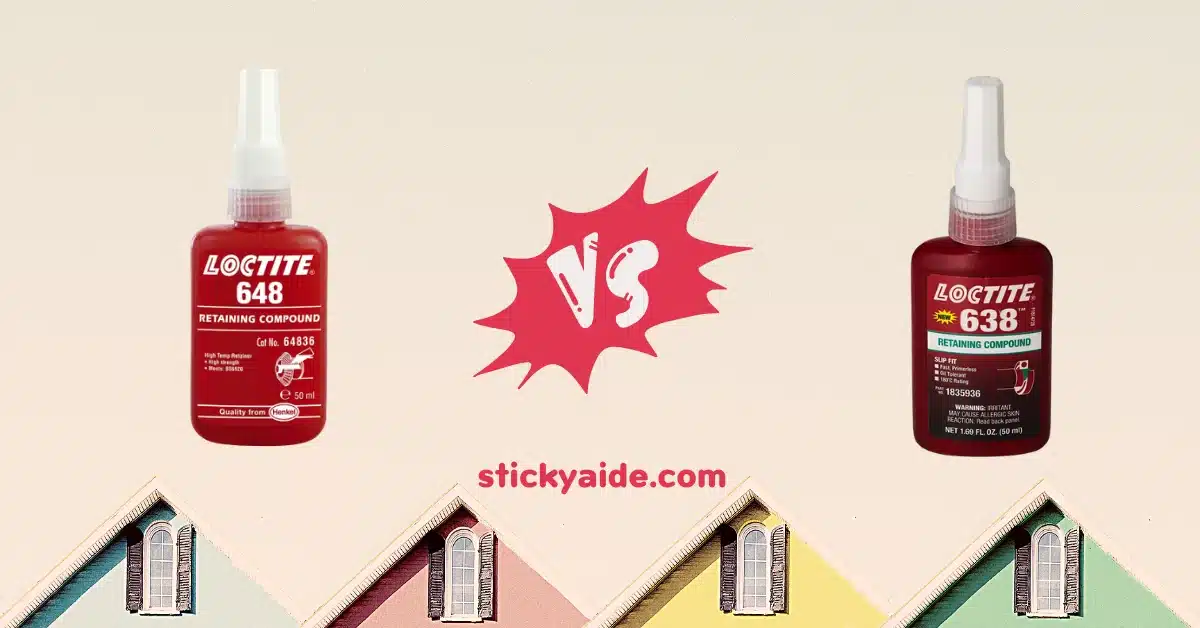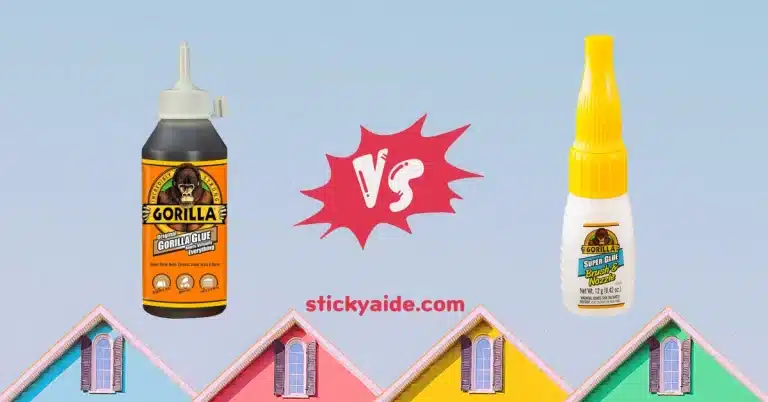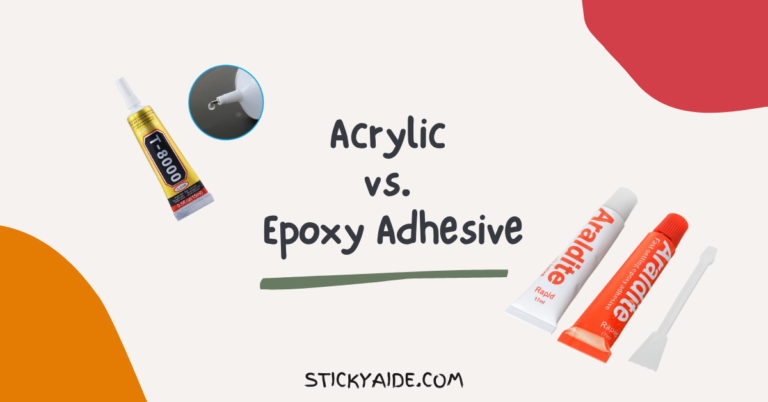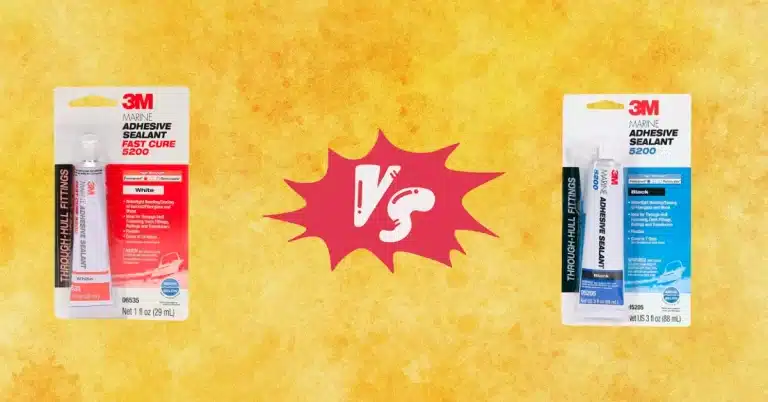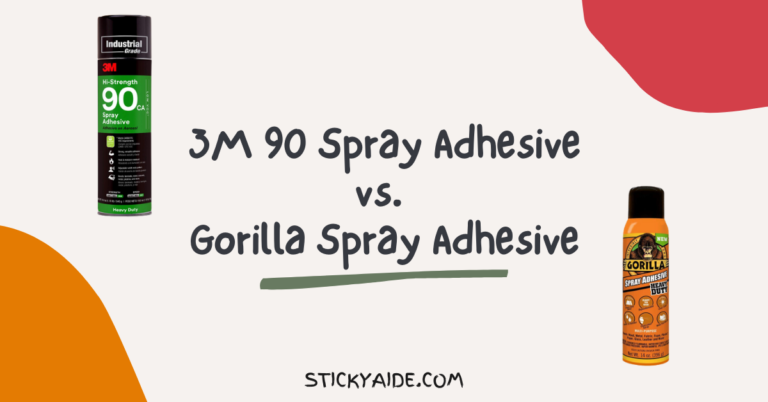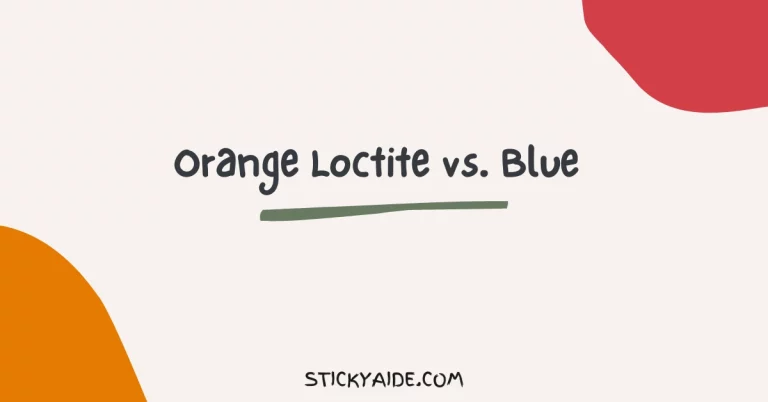Loctite is a well-known and widely popular brand in the world of adhesives and is known for its superior-quality products.
Loctite manufactures various types of glues, and sealants like – threadlockers, instant adhesives, retaining compounds etc. Loctite 638 and 648 are retaining compounds made by Loctite-Henkel.
So, in Loctite 638 vs 648, which one should you side with and why? I’ll review Loctite 638 and 648 features and specifications and how they differ in this article.
Read More: Loctite 248 vs. 242
Loctite 638 vs. 648
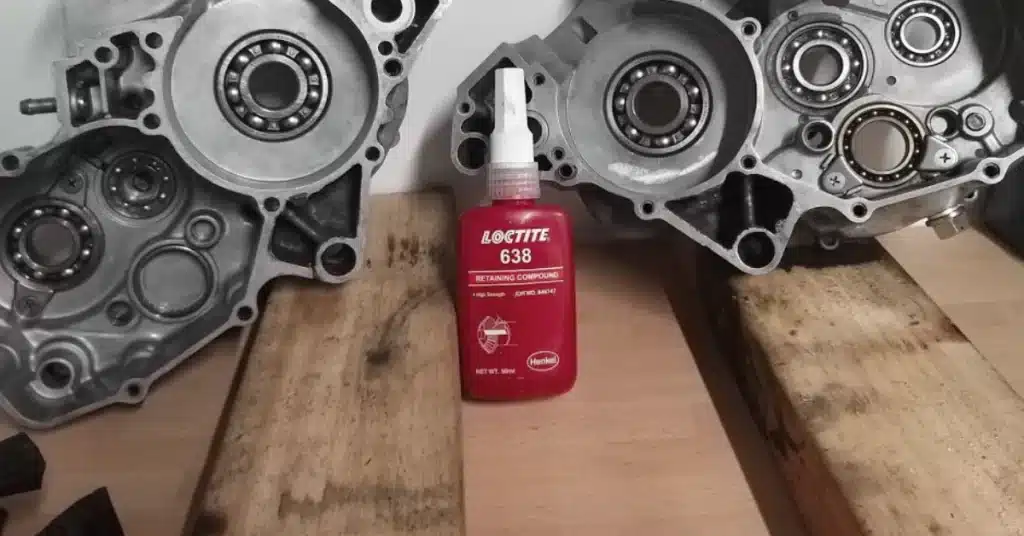
About Loctite 638
Loctite 638 is a green-coloured retaining compound made by Loctite-Henkel. Loctite 638 is a general-purpose retaining compound, and you can use it to bond cylindrical fitting parts.
Loctite 638 is a versatile adhesive since it works with all active metals and passive substrates like Stainless Steel. Furthermore, Loctite 638 forms a robust bond when completely cured and provides enhanced protection from leakage or loosening of parts due to shock or vibration.
Loctite 638 cures anaerobically, and the curing process starts when the adhesive is confined in the absence of air between fitting parts. Furthermore, the 638 has high-temperature resistance, which makes it ideal if you use it for components where there is the risk of the temperature fluctuating or being high.
Loctite 638 also has oil tolerance and is tolerant to minor contamination from industrial oils like cutting, lubrication, anti-corrosion and protection fluids. You can use Loctite 638 to lock bushings or sleeves into housings or shafts.
Loctite 638 uses a one-part formula, so you don’t need to mix anything into the adhesive. Loctite 638 can take up to 72 hours for a complete cure, but it depends on the materials you used, the temperature, and the bondline gap.
Read More: Loctite Red vs. Blue
About Loctite 648
Loctite 638 is a green-coloured retaining compound made by Loctite-Henkel with robust performance. Loctite 638 is fluorescent under UV light, and you can use UV light to monitor your components after you apply the adhesive.
Loctite 648 is a versatile adhesive since it works on all active metals and common passive substrates like stainless steel or plated surfaces. Loctite 648 cures when confined in the vacuum between close-fitting metal surfaces.
Furthermore, Loctite 648 also provides enhanced protection against your components loosening due to shock or vibration and has high-temperature resistance. Additionally, the 648 is also tolerant to minor contamination at the surface level due to spillage from industrial oils like – cutting,
lubrication, anti-corrosion and protection fluids.
Loctite 648 is a high-strength retaining compound, and you can use it for components indoors or outdoors; for example – it has a shear strength of 27 N/mm2 for Steel. Loctite 648 has low viscosity and cures anaerobically. The 648 uses acrylic technology and comprises Urethane methacrylate.
Loctite 648 can take up to 72 hours for a complete cure, depending on the materials you use, temperature and bondline gap. You can speed up the curing process using an activator like – SF 7471 or SF 7649.
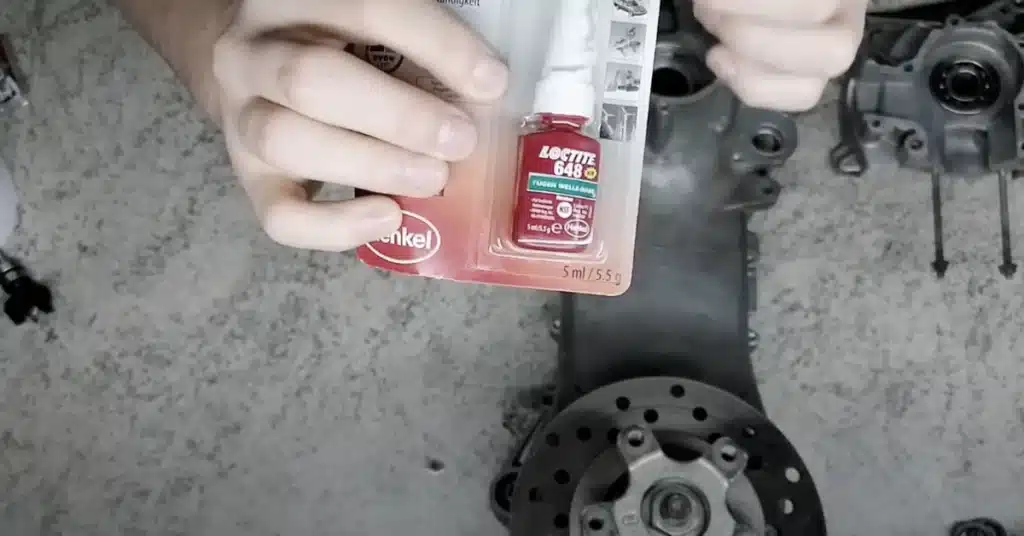
Read More: Loctite 638 vs. 680
Differences Between Loctite 638 And 648
Now let’s examine the difference between Loctite 638 and 648.
Ideal Applications
Loctite 638 is a general-purpose retaining compound with high-strength performance. You can use it to lock bushings or sleeves into housing or shafts. Additionally, you can use it for DIY projects like model trains.
Loctite 648 is a high-performance, high-strength retaining compound with enhanced protection against high temperature, vibration and shock. You can hold gears or sprockets into gearbox shafts and rotors on electric motor shafts with the 648.
Viscosity
Loctite 638 is a high-viscosity retaining compound with a viscosity of 2500 mPas.s.
On the other hand, Loctite 648 is a low-viscosity retaining compound with a viscosity of
500 mPas.s.
Ideal Gap Fill
You can use Loctite 638 to fill gaps up to 0.25 mm in diameter. You can use the 638 for filling gaps ranging from 0.15 mm to 0.25 mm.
On the other hand, you can use the 648 to fill gaps up to 0.25 mm in diameter.
How strong is Loctite 638?
Loctite 638 is a high-strength retaining adhesive designed for bonding cylindrical fitting parts. It forms a strong bond that can withstand high loads and vibrations.
However, the actual strength of the bond depends on various factors, such as the type of material being bonded, surface preparation, and application conditions.
How strong is Loctite 648?
Loctite 648 is a high-strength anaerobic adhesive designed for bonding cylindrical fitting parts. It creates a strong bond that can withstand high loads and vibrations.
However, the exact strength of the bond depends on factors such as the type of material being bonded, surface preparation, and application conditions.
What is Loctite 648 used for?
Loctite 648 is an anaerobic adhesive commonly used for bonding cylindrical metal parts, particularly in applications with high strength and resistance to vibration.
Examples of its use include the assembly of pumps, motors, and gearboxes, as well as for general bonding and sealing of metal threaded parts. Loctite 648 sets and cures without air, resulting in a strong and permanent bond.
What is Loctite 638 used for?
Loctite 638 is an anaerobic adhesive used for bonding cylindrical metal parts. It is intended for applications where high strength and resistance to vibration are necessary.
It is particularly useful in the assembly of pumps, motors, and gearboxes, as well as for general bonding and sealing of metal threaded parts. Loctite 638 sets and cures without air, forming a strong and permanent bond.
Last Opinion
So, which one should you pick in the debate of Loctite 638 vs 648? It depends on you and which purpose you need your retaining compound for.
Loctite 638 is your ideal pick if you’re looking for a high-viscosity adhesive and plan to fill gaps ranging from 0.15 mm to 0.25 mm. On the other hand, the 648 is your ideal pick if you’re looking for a low-viscosity adhesive and plan to use it for gearbox or electric motor shafts.

